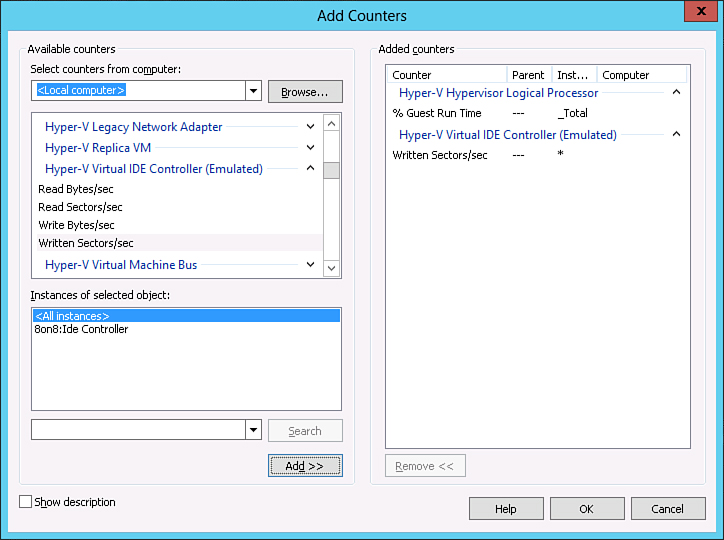Remote Desktop Services Server
Remote Desktop Services Server has its own
performance objects for the Performance Monitor, still called the
Terminal Services Session and Terminal Services objects. It provides
resource statistics such as errors, cache activity, network traffic
from Remote Desktop Server, and other session-specific activity. Many
of these counters are similar to those found in the Process object.
Some examples include % Privileged Time, % Processor Time, % User Time,
Working Set, Working Set Peak, and so on.
Three important areas to always
monitor for Remote Desktop Session Host capacity analysis are the
memory, processor, and application processes for each session.
Application processes are by far the hardest to monitor and control
because of the extreme variances in programmatic behavior. For example,
all applications might be 32-bit, but some might not be certified to
run on Windows Server 2012. You might also have in-house applications
running on Remote Desktop Services that might be poorly designed or too
resource intensive for the workloads they are performing.
Hyper-V Servers
Deployment of virtual servers and
consolidation of hardware is becoming more and more prevalent in the
business world. When multiple servers are running in a virtual
environment on a single physical hardware platform using the Hyper-V
role, performance monitoring and tuning become essential to maximize
the density of the virtual systems. If three or four virtual servers
are running on a system and the memory and processors are not allocated
to the virtual guest session that could use the resources, virtual host
resources are not being utilized efficiently. In addition to monitoring
the common items of memory, disk, network, and CPU, dozens of counters
provide information about the host and guest processes. Monitoring
counters for guest sessions can be very valuable in determining whether
specific guest sessions are monopolizing host resources. The categories
that provide guest related counter are Hyper-V Dynamic Memory VM,
Hyper-V Hypervisor Virtual Processor, Hyper-V Virtual IDE Controller
and Hyper-V Virtual Network Adapter. Many of the counters in these
categorize can be configured to measure a single guest session or the
total of all guest sessions. For example, Figure 1
shows the available counters for the Hyper-V Virtual IDE Controller
object. In addition to the counters, Hyper-V performance can also be
monitored using Microsoft System Center Virtual Machine Manager and
System Center Operations Manager, added when virtualization is running
on the Windows Server 2012 host.

Figure 1. Performance Monitor IDE counters for virtualization.